Tap Into The World Around You With Wearables and Visa Versa
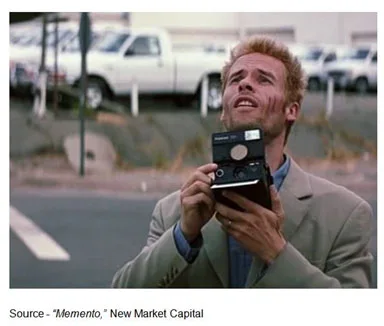
It took 14 years for color TV to have 10 percent penetration in U.S. homes. It took cellphones nine years to achieve 10 percent penetration. It took smartphones five years to achieve 10 percent penetration.
It has taken two years for wearables (primarily personalized watches, fitness bands) to achieve eight percent U.S. Internet household penetration, according to Altimeter Group. And, according to recent corporate earnings reports and analyst dissection, most are Apple Watches.
But watches and fitness bands are only a part of the silver lining future industry analysts and fortune tellers are projecting for us … just one piece of the puzzle.
Most of those folks who got their watches (75 percent Apple Watches, according to Ben Bajarin, of Creative Strategies), think of themselves as advanced techies or tech-obsessed. Heck, a lot of them probably have Google Glasses gathering dust in their treasure drawers.
O.K., probably not, because most users in one camp (Apple or Android) think the folks in the other camp are freakin’ idiots.
Problem One
Therein lies the problem. There are only two major camps (iOS, Android) and two less major camps (WIN and open source).
Businesses and normal people don’t really care what’s under the hood. They just want their wearables to do the things they want them to do, the way they want them done.
But decisions and choices are made before either one has a chance to vote at the implementation or cash register level.
Bought an Apple Watch? Better have an iPhone because your Watch won’t talk to a Samsung smartphone.
And so it will be with the complete wearables market – fitness/wellness, infotainment, healthcare/medical, industrial/military … hardware, software, apps and horizontal/vertical systems/solutions.
Sales are being made but only to the folks who want something new on their wrist, their neck, their finger, their head.
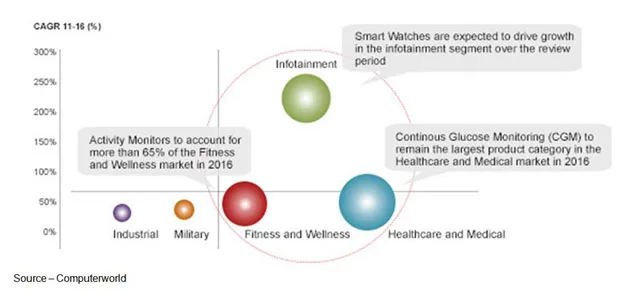 Key Markets Potential – While we tend to think of wearables as a glamour consumer product, the real potential and market opportunities fall in smaller market categories. These are the areas where the real growth potential lies for hardware, software and service firms.
Key Markets Potential – While we tend to think of wearables as a glamour consumer product, the real potential and market opportunities fall in smaller market categories. These are the areas where the real growth potential lies for hardware, software and service firms.
That’s the wearables global market today; but then, there are divisions and subdivisions.
Fitness, Wellness
Fitness and activity bands kicked off the category back in 2011 because they could measure what you were doing to help you regain the body you had whenever you looked your best. Units from Fitbit, Jawbone, Nike and a marathon of others have done well by introducing new styles, new minor features and … lowering unit costs.
Of course, other than for bling, the usage rate for the devices drop off about as quickly as the commitment to hit the gym as often as you should to exercise the band.
Hope springs eternal, so a new one might be the one that whips you into shape or at least it looks neater and does more things.
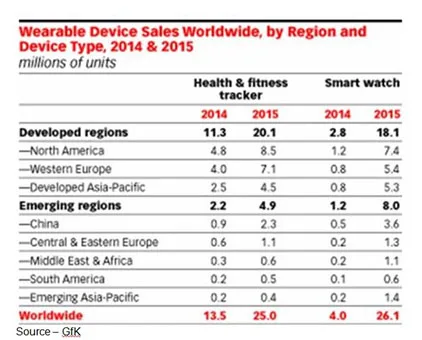 Highest Visibility – Fitness trackers and smartwatches garner most of the general news and stockbroker excitement because they’re things that ordinary folks can understand and will hopefully buy. Consumer sales and adoption have been slow and will remain minor compared to the sale/use of smartphones and even tablets, according to most experts.
Highest Visibility – Fitness trackers and smartwatches garner most of the general news and stockbroker excitement because they’re things that ordinary folks can understand and will hopefully buy. Consumer sales and adoption have been slow and will remain minor compared to the sale/use of smartphones and even tablets, according to most experts.
The introduction of the second generation smartwatches from LG, Moto, Asus, Sony, Samsung and finally, Apple; delivered the health/wellness information (with the right apps).
Then they added all of the infotainment things you needed such as your basic smartphone capabilities and a platform for infotainment, social media access as well as horizontal and vertical third-party apps.
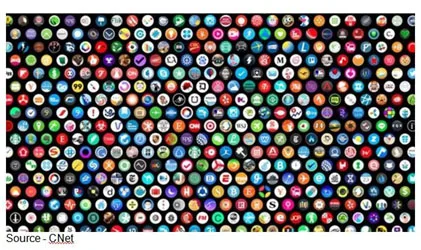 Apps Galore – Applications will ultimately define the use and success of wearable technology– not just for on-the-go games and social media, but for horizontal, vertical and niche usage that will change the way businesses function.
Apps Galore – Applications will ultimately define the use and success of wearable technology– not just for on-the-go games and social media, but for horizontal, vertical and niche usage that will change the way businesses function.
More importantly, the OS delivered a building platform that would enable the device to become a key part of tomorrow’s healthcare plans and business activities/operations.
Of course, all of that won’t grab the headlines or turn analysts’ heads like newer, better, bright shiny objects; but it is where the money is for businesses, industries.
According to Robert Half Technology, company IT (information technology) executives are already looking ahead. They found that 81 percent of these folks felt wearables would become standard tools in the organization in the next five years for record keeping, scanning docs, navigation, documenting activities/efforts and tapping into information any time, any place.
The software folks at Salesforce must have been able to see over the horizon because they put out a developer’s kit that would let folks build apps that people could use in their software environment (naturally).
Companies are already delivering apps from Salesforce’s Service Cloud to enable employees to get JIT (just in time) info on inventory, customer status, documentation, ERP (enterprise resource planning) databases and just about everything that would improve productivity.
Wearables will be great time savers for field and service personnel to fill out worksheets, handle scheduling and access installation/service info while their bosses use them to improve the team’s and individual’s performance.
Glasses Fit
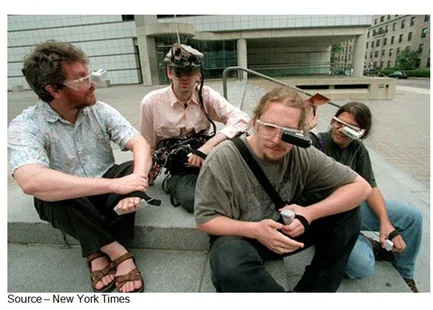 Fashionless Statement – While Googlidites had visions of everyone wearing connected/smart glasses to stay instantly in touch with everyone, they failed in spectacular fashion. However, there are many applications where they are a benefit to the user and those around them. Second- generation glasses are showing their value.
Fashionless Statement – While Googlidites had visions of everyone wearing connected/smart glasses to stay instantly in touch with everyone, they failed in spectacular fashion. However, there are many applications where they are a benefit to the user and those around them. Second- generation glasses are showing their value.
Although folks got punched out for wearing Google Glass the first time around or were told they looked like a total ***, smart glasses do have a real application (and market) in the enterprise and healthcare environment.
Well under the glamour radar, they will become commonplace in the healthcare environment to access patient records, monitor vitals, follow/document procedures and niche applications that in a few years professionals will wonder how they ever took care of patients without them before.
In spite of Googlidites missteps, business and enterprise service providers saw the benefits of smart glasses for people on the production floor, in research facilities and in the field.
Why use a paper or tablet/computer-based manual, two-way radio or smartphone for information/assistance or a second set of eyes when folks need both hands free to quickly, accurately, safely get the job done, right?
These are applications that will reshape business processes as well as the way people work and interact with their environments.
Market of Markets
 Growth Segments – Engineers and designers are rushing wearable computing solutions to the market as rapidly as possible, despite minor issues like battery life and lack of privacy/security. Many industry players simply mumble that’s a software issue.
Growth Segments – Engineers and designers are rushing wearable computing solutions to the market as rapidly as possible, despite minor issues like battery life and lack of privacy/security. Many industry players simply mumble that’s a software issue.
Yes, the wearables market is going to be big – huge even, but functions and applications will drive it first … then style.
There will be a ton of head, wrist, finger, eye and other wearables introduced (and bought) over the next few years that will be used for a while and quietly retired to the Google Glass drawer, only to be replaced by the next cool, shiny object.
This will make it almost impossible for analysts to guess (project) the market for wearable technology because so many things will be dropped into the “wearable” category.
Folks will be rapidly jumping in with new products, swearing to gawd that they’ve just come up with the next insanely in-demand wearable thing … and more than a few lemmings will grab them up.
So pick a number you like and you’ll probably be as right as the guy/gal next to you. Last year, there was a spread of 10M units sold between the conservative/aggressive projections.
This year, forecasts range from Technalysis’ 40M to IDC’s 45.7M units to CCS Insight’s 75M to Yano Research Institute’s 104.8M.
With a little bit of creative thinking, there are an almost limitless number of places good engineers can design in MEMS (microelectromechanical systems) … and they will.
Of course, most people won’t pay much attention to them until Apple introduces its whatever and legitimizes the segment as real so folks have something to cheer and complain about.
Plenty of Work Ahead
With just the few bands and watches we currently have to choose from, there’s already a laundry list of minor improvements that have to be made.
Little things like:
- Battery life – we already have all of the household Power2U wall outlets filled to charge the family computers, tablets, phones; and a watch/glass battery that only lasts 24-48 hours doesn’t hack it
- Onboard memory – there’s so little flash memory in there right now you’d think remembering stuff was an afterthought, especially with the number of apps the kids want to add
- Style – face it, people still like to look good/great when they’re monitoring/tracking everything. Glasses and watches still have a ways to go before they are chic … even for work. Of course, real wearables (clothes) are a little easier, but that’s a whole new wardrobe
- Meaningful apps – for our kids, that means all their social media stuff and fun things. For adults, it’s health/wellness; business apps and yes, their social media connections. These killer apps come as the numbers grow.
The Killer to Overcome
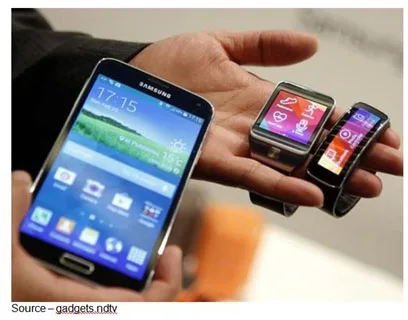 Danger Signals – The biggest concern the industry has right now is that the new technology gathers a constant stream of personal information without adequate privacy and security guidelines and technology in place.
Danger Signals – The biggest concern the industry has right now is that the new technology gathers a constant stream of personal information without adequate privacy and security guidelines and technology in place.
As long as you don’t think too hard about it, you’ll snap up as many wearables as you can to show how cool you are.
But get past the bragging rights and you’re going to have to face the cold, hard facts that:
- The damn things are getting way more information about you than even you know about you and is sharing it with “someone”
- That they’re about as safe/secure as your government’s employee database
- They’re sending all that stuff unencrypted or using outdated encryption over very open lines to holey clouds
The web-based interface makes it easy for hackers to do brute force searches of your device/apps for active user names, and most of them have firmware update protection issues.
Of course, they suffer – right along with your computer, tablet, smartphone – with stupidly weak password; but after all, you do need something you can remember like 123456 or ABCDEF or your spouse’s/kids’/pet’s name.
And, if you don’t read those really personal info wearable apps carefully, you probably won’t think twice about what’s being collected and all the things they can do with your data. The app developer and unseen data brokers gather and parse out great info to interested parties – identity, demographics, travel, purchasing habits, health info and habits/personal patterns.
In simple terms, everything that marketers, government folks, hackers and the boss want to know.
Or, as Bishop Fox’s security analyst Conan Dooley, said, “People are so willing to give up privacy for functionality because functionality is a tangible benefit and privacy is an immaterial one.”
Looking at the 2020 analysts’ projections, there’s something to be said for the fact that the move from geek to chic will be driven by improved user experience.
Guess memory loss won’t be a problem in the future.
 Leonard Shelby liked that observation when he said, “That’s good advice. I’ll have to write that down.”
Leonard Shelby liked that observation when he said, “That’s good advice. I’ll have to write that down.”
# # #